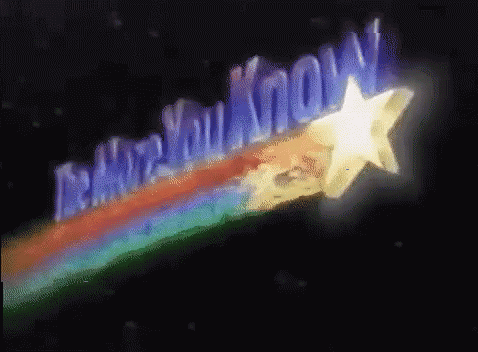The Australian government has jailed the Gazan grandmother of a family in Australia. The government says it did this because she is a security threat, but refuses to explain how that could be so. Two other people from Gaza were likewise jailed.
The government said it won't send them back to Gaza. Maybe that means it will send them to some remote prison island such as Manus Island.
*Gaza's healthcare system is being destroyed by targeted attacks.* Israel has killed 1400 medical personnel in Gaza, with persistent attacks against medical clinics and hospitals.
600 Israeli medical practitioners have signed a letter condemning Israel for the war crime of killing medical personnel in war.
Israeli Extremist "settlers" murdered a Palestinian-American who was visiting his family in the West Bank. After injuring him, they block medics from reaching him until he died.
They killed another Palestinian by shooting him.
A judge ordered the deportation thugs not to arrest anyone without specific grounds about that person. Mere racial profiling is not enough grounds.
Here's how Angelenos have learned to respond to the daily raids.
Calling on Europe to require antisocial media platforms to stop using recommendation algorithms.
*Democrats and climate groups "too polite" in fight against "malevolent" fossil fuel giants, says key senator [Sheldon Whitehouse].*
(satire) WASHINGTON— *In a stunning security breach that reportedly left many top-ranking administration officials vulnerable to attack, the White House was evacuated Tuesday after the building’s trans alarm went off.*
The DOPE's accusations of unemployment fraud are themselves a fraud. Many are records of claims that were denied years ago because they were found to be invalid.
*US man arrested while filming Home Depot Ice raid sues government for $1m.*
Uniformed thugs have gone around brutalizing innocent people for decades, if not millennia. The US government used to impose rules on violent thug departments to keep their violence in check.
Now, by contrast, the bully encourages thugs to let their cruelest appetites run away with them.
*"Tremendous uncertainty" for cancer research as US officials target mRNA vaccines.*
A substantial fraction of people get cancer. You could be one of them. The research they are canceling could have saved your life.

ICE Lawyers Are Hiding Their Names in Immigration Court:
"I've never heard of someone in open court not being identified," said Elissa Steglich, a law professor and co-director of the Immigration Clinic at the University of Texas at Austin. "Part of the court's ethical obligation is transparency, including clear identification of the parties. Not identifying an attorney for the government means if there are unethical or professional concerns regarding [the Department of Homeland Security], the individual cannot be held accountable. And it makes the judge appear partial to the government."
"Part of the court's ethical obligation is transparency, including clear identification of the parties." [...]
When Judge ShaSha Xu omitted the ICE lawyer's name, Attorney Jeffrey Okun asked her to identify who was arguing to deport his client. She refused.
Xu attributed the change to "privacy" because "things lately have changed." Xu told Okun that he could use Webex's direct messaging function to send the ICE lawyer his email, and the ICE lawyer would probably respond with her own name and address. [...]
The government's mystery attorney, who was prosecuting both Okun's and Gonzalez-Venegas's clients, wore glasses and a navy blue suit; her hair was pulled back primly from her face. She spoke quietly, with a tinge of vocal fry. Her name, according to Gonzalez Venegas, was Cosette Shachnow.
Shachnow, 33, began working for ICE in 2021, shortly after she graduated from law school, according to public records and her LinkedIn account. The latter lists "Civil Rights and Social Action" among her "favored causes."
Previously, previously, previously, previously, previously, previously.

James Steinberg has designed an app that allows you to change the background your digital airplane boarding pass to display a now-infamous image of the vice president as a bald, bearded baby-man. [...]
He says there was no issue at security. "The TSA tried not to show emotion but looked mildly amused," Steinberg says. "Maybe I should try in a less liberal airport."
As someone who, regrettably, has a lot of experience with Apple Wallet, I was curious how he's altering the picture, since pkpass files are signed. He's not! He's taking your info and issuing a new pkpass with the same content.
One of the cool features of pkpass is that they receive push updates, so that, for example, if the time of the event / flight changes, your pass can be updated remotely and notify you. Bald Boarding almost certainly breaks that connection.




Previously, previously, previously, previously, previously, previously, previously, previously, previously, previously, previously.

I have a friend who exited his startup a few years ago and is now rich. How rich is unclear. One day, we were discussing ways to expedite the delivery of his superyacht and I suggested paying extra. His response, as to so many of my suggestions, was, “Avery, I’m not that rich.”
Everyone has their limit.
I, too, am not that rich. I have shares in a startup that has not exited, and they seem to be gracefully ticking up in value as the years pass. But I have to come to work each day, and if I make a few wrong medium-quality choices (not even bad ones!), it could all be vaporized in an instant. Meanwhile, I can’t spend it. So what I have is my accumulated savings from a long career of writing software and modest tastes (I like hot dogs).
Those accumulated savings and modest tastes are enough to retire indefinitely. Is that bragging? It was true even before I started my startup. Back in 2018, I calculated my “personal runway” to see how long I could last if I started a company and we didn’t get funded, before I had to go back to work. My conclusion was I should move from New York City back to Montreal and then stop worrying about it forever.
Of course, being in that position means I’m lucky and special. But I’m not that lucky and special. My numbers aren’t that different from the average Canadian or (especially) American software developer nowadays. We all talk a lot about how the “top 1%” are screwing up society, but software developers nowadays fall mostly in the top 1-2%[1] of income earners in the US or Canada. It doesn’t feel like we’re that rich, because we’re surrounded by people who are about equally rich. And we occasionally bump into a few who are much more rich, who in turn surround themselves with people who are about equally rich, so they don’t feel that rich either.
But, we’re rich.
Based on my readership demographics, if you’re reading this, you’re probably a software developer. Do you feel rich?
It’s all your fault
So let’s trace this through. By the numbers, you’re probably a software developer. So you’re probably in the top 1-2% of wage earners in your country, and even better globally. So you’re one of those 1%ers ruining society.
I’m not the first person to notice this. When I read other posts about it, they usually stop at this point and say, ha ha. Okay, obviously that’s not what we meant. Most 1%ers are nice people who pay their taxes. Actually it’s the top 0.1% screwing up society!
No.
I’m not letting us off that easily. Okay, the 0.1%ers are probably worse (with apologies to my friend and his chronically delayed superyacht). But, there aren’t that many of them[2] which means they aren’t as powerful as they think. No one person has very much capacity to do bad things. They only have the capacity to pay other people to do bad things.
Some people have no choice but to take that money and do some bad things so they can feed their families or whatever. But that’s not you. That’s not us. We’re rich. If we do bad things, that’s entirely on us, no matter who’s paying our bills.
What does the top 1% spend their money on?
Mostly real estate, food, and junk. If they have kids, maybe they spend a few hundred $k on overpriced university education (which in sensible countries is free or cheap).
What they don’t spend their money on is making the world a better place. Because they are convinced they are not that rich and the world’s problems are caused by somebody else.
When I worked at a megacorp, I spoke to highly paid software engineers who were torn up about their declined promotion to L4 or L5 or L6, because they needed to earn more money, because without more money they wouldn’t be able to afford the mortgage payments on an overpriced $1M+ run-down Bay Area townhome which is a prerequisite to starting a family and thus living a meaningful life. This treadmill started the day after graduation.[3]
I tried to tell some of these L3 and L4 engineers that they were already in the top 5%, probably top 2% of wage earners, and their earning potential was only going up. They didn’t believe me until I showed them the arithmetic and the economic stats. And even then, facts didn’t help, because it didn’t make their fears about money go away. They needed more money before they could feel safe, and in the meantime, they had no disposable income. Sort of. Well, for the sort of definition of disposable income that rich people use.[4]
Anyway there are psychology studies about this phenomenon. “What people consider rich is about three times what they currently make.” No matter what they make. So, I’ll forgive you for falling into this trap. I’ll even forgive me for falling into this trap.
But it’s time to fall out of it.
The meaning of life
My rich friend is a fountain of wisdom. Part of this wisdom came from the shock effect of going from normal-software-developer rich to founder-successful-exit rich, all at once. He described his existential crisis: “Maybe you do find something you want to spend your money on. But, I'd bet you never will. It’s a rare problem. Money, which is the driver for everyone, is no longer a thing in my life.”
Growing up, I really liked the saying, “Money is just a way of keeping score.” I think that metaphor goes deeper than most people give it credit for. Remember old Super Mario Brothers, which had a vestigial score counter? Do you know anybody who rated their Super Mario Brothers performance based on the score? I don’t. I’m sure those people exist. They probably have Twitch channels and are probably competitive to the point of being annoying. Most normal people get some other enjoyment out of Mario that is not from the score. Eventually, Nintendo stopped including a score system in Mario games altogether. Most people have never noticed. The games are still fun.
Back in the world of capitalism, we’re still keeping score, and we’re still weirdly competitive about it. We programmers, we 1%ers, are in the top percentile of capitalism high scores in the entire world - that’s the literal definition - but we keep fighting with each other to get closer to top place. Why?
Because we forgot there’s anything else. Because someone convinced us that the score even matters.
The saying isn’t, “Money is the way of keeping score.” Money is just one way of keeping score.
It’s mostly a pretty good way. Capitalism, for all its flaws, mostly aligns incentives so we’re motivated to work together and produce more stuff, and more valuable stuff, than otherwise. Then it automatically gives more power to people who empirically[5] seem to be good at organizing others to make money. Rinse and repeat. Number goes up.
But there are limits. And in the ever-accelerating feedback loop of modern capitalism, more people reach those limits faster than ever. They might realize, like my friend, that money is no longer a thing in their life. You might realize that. We might.
There’s nothing more dangerous than a powerful person with nothing to prove
Billionaires run into this existential crisis, that they obviously have to have something to live for, and money just isn’t it. Once you can buy anything you want, you quickly realize that what you want was not very expensive all along. And then what?
Some people, the less dangerous ones, retire to their superyacht (if it ever finally gets delivered, come on already). The dangerous ones pick ever loftier goals (colonize Mars) and then bet everything on it. Everything. Their time, their reputation, their relationships, their fortune, their companies, their morals, everything they’ve ever built. Because if there’s nothing on the line, there’s no reason to wake up in the morning. And they really need to want to wake up in the morning. Even if the reason to wake up is to deal with today’s unnecessary emergency. As long as, you know, the emergency requires them to do something.
Dear reader, statistically speaking, you are not a billionaire. But you have this problem.
So what then
Good question. We live at a moment in history when society is richer and more productive than it has ever been, with opportunities for even more of us to become even more rich and productive even more quickly than ever. And yet, we live in existential fear: the fear that nothing we do matters.[6][7]
I have bad news for you. This blog post is not going to solve that.
I have worse news. 98% of society gets to wake up each day and go to work because they have no choice, so at worst, for them this is a background philosophical question, like the trolley problem.
Not you.
For you this unsolved philosophy problem is urgent right now. There are people tied to the tracks. You’re driving the metaphorical trolley. Maybe nobody told you you’re driving the trolley. Maybe they lied to you and said someone else is driving. Maybe you have no idea there are people on the tracks. Maybe you do know, but you’ll get promoted to L6 if you pull the right lever. Maybe you’re blind. Maybe you’re asleep. Maybe there are no people on the tracks after all and you’re just destined to go around and around in circles, forever.
But whatever happens next: you chose it.
We chose it.
Footnotes
[1] Beware of estimates of the “average income of the top 1%.” That average includes all the richest people in the world. You only need to earn the very bottom of the 1% bucket in order to be in the top 1%.
[2] If the population of the US is 340 million, there are actually 340,000 people in the top 0.1%.
[3] I’m Canadian so I’m disconnected from this phenomenon, but if TV and movies are to be believed, in America the treadmill starts all the way back in high school where you stress over getting into an elite university so that you can land the megacorp job after graduation so that you can stress about getting promoted. If that’s so, I send my sympathies. That’s not how it was where I grew up.
[4] Rich people like us methodically put money into savings accounts, investments, life insurance, home equity, and so on, and only what’s left counts as “disposable income.” This is not the definition normal people use.
[5] Such an interesting double entendre.
[6] This is what AI doomerism is about. A few people have worked themselves into a terror that if AI becomes too smart, it will realize that humans are not actually that useful, and eliminate us in the name of efficiency. That’s not a story about AI. It’s a story about what we already worry is true.
[7] I’m in favour of Universal Basic Income (UBI), but it has a big problem: it reduces your need to wake up in the morning. If the alternative is bullshit jobs or suffering then yeah, UBI is obviously better. And the people who think that if you don’t work hard, you don’t deserve to live, are nuts. But it’s horribly dystopian to imagine a society where lots of people wake up and have nothing that motivates them. The utopian version is to wake up and be able to spend all your time doing what gives your life meaning. Alas, so far science has produced no evidence that anything gives your life meaning.
Blaming intense media coverage and backlash to the US military deployment in Los Angeles, DHS expects the demonstrations to "continue and grow across the nation" as protesters focused on other issues shift to immigration, following a broad "embracement of anti-ICE messaging."
Don't threaten me with a good time.
The guidance urges officers to consider a range of nonviolent behavior and common protest gear -- like masks, flashlights, and cameras -- as potential precursors to violence [...] Protesters on bicycles, skateboards, or even "on foot" are framed as potential "scouts" conducting reconnaissance or searching for "items to be used as weapons." Livestreaming is listed alongside "doxxing" as a "tactic" for "threatening" police. Online posters are cast as ideological recruiters -- or as participants in "surveillance sharing."
One list of "violent tactics" shared by the Los Angeles -- based Joint Regional Intelligence Center -- part of a post-9/11 fusion network -- includes both protesters' attempts to avoid identification and efforts to identify police.
That can't be correct. Skateboarding, I have been reliably informed, is not a crime.
In advance of protests, agencies increasingly rely on intelligence forecasting to identify groups seen as ideologically subversive or tactically unpredictable. Demonstrators labeled "transgressive" may be monitored, detained without charges, or met with force.
 In xscreensaver-settings, any time I select a different item in the list, I get a crash with:
In xscreensaver-settings, any time I select a different item in the list, I get a crash with: GLib: g_ptr_array_unref: assertion 'array' failed
This assertion fires late, with none of my code on the stack, so I have no idea what it is complaining about; and valgrind provides no clues. It started happening recently, but happens against releases as far back as XScreenSaver 6.05, so something about GTK changed, not my code. Commenting out every call to g*_free does not make it go away. Happens under X11 or Wayland.
I have no patience for dealing with GTK, so I would be very appreciative if someone else would figure this out...
Update: I am seeing this consistently on GTK 3.24.38-2 on Raspbian 12.11, but a few people have told me that they can't reproduce it. So that's even weirder.
Security researcher Alex Radocea found that it's possible to impersonate someone else and trick a person's contacts into thinking they are talking to the legitimate contact. [...]
"Security is a great feature to have for going viral. But a basic sanity check, like, do the identity keys actually do any cryptography, would be a very obvious thing to test when building something like this." [...]
Referring to his and other people's findings, Radocea criticized Dorsey's warning that Bitchat has not been tested for security.
"I'd argue it has received external security review, and it's not looking good," he said.
Previously, previously, previously, previously, previously, previously.

Planet Debian upstream is hosted by Branchable.























